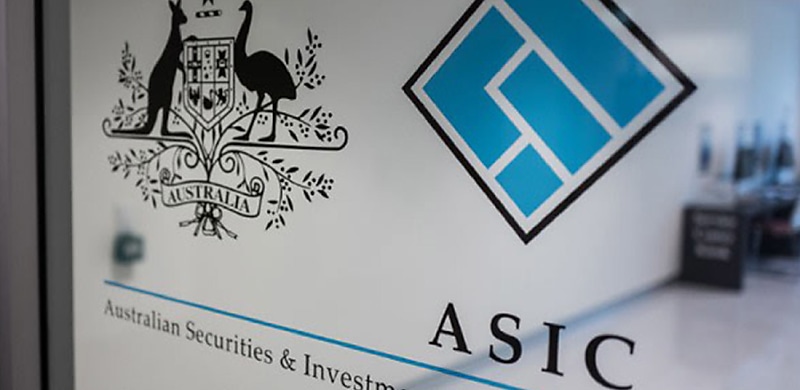
A total of $8.676 million will be charged to credit intermediaries to cover ASIC’s regulatory costs for the year, nearly $2 million less than anticipated.
The Australian Securities and Investments Commission (ASIC) has released its 2021-22 annual dashboard outlining its regulatory costs for the last financial year (FY22).
These costs are calculated at the end of each financial year and are based on the actual effort ASIC expends for each sector and subsector.
While the regulator had issued a forecast of its projected costs (which are partly recovered by industry levies), it has now released its final figures. According to ASIC, its total regulatory costs to be recovered through levies is $313.3 million, $19.0 million less than its estimated costs of $332.3 million.
The largest driver of this variance was found to be “court awarded costs for successful matters’, which was $13.0 million.
Broker levies less than anticipated
The deposit taking and credit sector will see lower levies than anticipated, after total regulatory costs recovered through levies were 11 per cent down on forecasts, at $59.578 million.
The mortgage broking industry will see smaller invoices issued early next year, after the cost recovery amount came in $2.2 million under ASIC’s forecasts.
For FY22, ASIC now expects to recover $8.676 million from the 4,291 credit intermediaries it regulates (as per the meaning of the National Credit Act), the numbers show.
This marks a decrease of more than 20 per cent on last year’s levies.
ASIC’s forecasts also show that there are 122 fewer credit intermediaries this year than expected.
The minimum levy per credit representative has dropped for FY22, falling to $1,000 plus $113.23 (down from its forecasted $1,000 plus $171.97 per credit representative).
Noting the variance, the regulator said the main driver came down to “enforcement costs being lower than what we estimated”.
“This was largely due to certain matters reaching their closing stages,” ASIC said.
“There were also lower investigation and court action costs for continuing enforcement matters relevant to this subsector, including the rescoping of certain matters.
“Indirect costs are allocated to supervision and surveillance teams and enforcement teams in proportion to the internal support they receive based on their level of activity,” it continued.
“The lower than expected enforcement costs resulted in a lower proportion of indirect costs being allocated to this subsector,” ASIC added.
Other subsectors that will see smaller invoices in the new year include:
- Credit providers: final regulatory costs for FY22 totalled $31.837 million, down 8 per cent on the $34.613 million forecast.
- Small and medium amount credit providers: final regulatory costs for FY22 totalled $4.630 million, down 8 per cent on the $5.033 million forecast.
- Deposit product providers: Final regulatory costs for FY22 totalled $12.010 million, down 14 per cent on the $14.009 million forecast.
However, payment product providers will see larger bills than anticipated, as the final regulatory costs for this subsector for FY22 was up 5 per cent, at $2.416 million.
But it is margin lenders that will see the greatest shock, after total regulatory costs were more than three times what was forecast — or +334 per cent — coming in at $0.009 million.
This largely related to supervision and surveillance costs.
The variance between ASIC’s forecasts and actual recovery costs has been a source of contention in the industry. As previously reported in The Adviser, the objective behind ASIC’s estimates is to help regulated entities budget for the upcoming costs; however, the regulator was met with ire when the final costs for its regulatory program, for the last financial year, were much higher than anticipated.
For FY20–21, the regulator indicated intermediaries would be charged around $96.55 per credit representative — but the final charges were double that, at $184.31 per credit representative.
Ultimately, this figure was nearly triple the levy from the previous financial year, when credit intermediaries were charged $61.76 per rep. As such, while ASIC had estimated it would recoup $8.15 million from credit intermediaries for FY21, it ended up collecting $11.36 million.
Members of the broking industry, including the managing director of the Finance Brokers Association of Australia (FBAA), Peter White, have urged ASIC for greater transparency on the subsectors impacting fee anomalies.
It has also urged for those that are not providing credit assistance but hold an ACL to be taken out of the costing to brokers who are providing credit assistance.
ASIC cancels/suspends 21 credit licences
As well as releasing its actual regulatory costs for the year, the regulator has also been busy wrapping up the year with court cases and compliance action.
It recently cancelled or suspended 21 credit licences — including those of mortgage brokers — for failing to be an AFCA member.
The action comes after ASIC found that the businesses had failed to meet requirements to be a member of the dispute resolution scheme, the Australian Financial Complaints Authority (AFCA), a legal obligation for credit licensees.
After working with AFCA to identify financial services licensees and credit licensees that were not complying with their obligation to maintain their AFCA membership, a total of 21 licences were cancelled between 1 April 2022 and 9 December 2022.
This includes several broking companies, such as:
- First Mortgage Home Loan (cancelled 13 July 2022);
- Capital-West Finance (licence cancelled 23 August 2022);
- Australian Mortgage Partners (licence cancelled 9 November 2022); and
- Kingston Capital Services Australia (Licence cancelled 9 December 2022).
[Related: ‘Doubled’ ASIC fees ‘cannot happen again’: FBAA]

